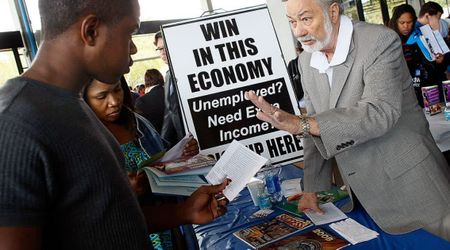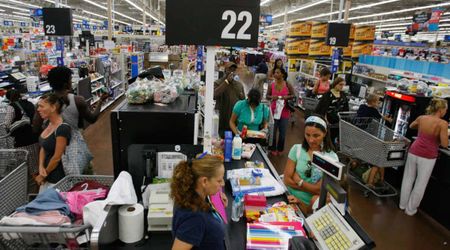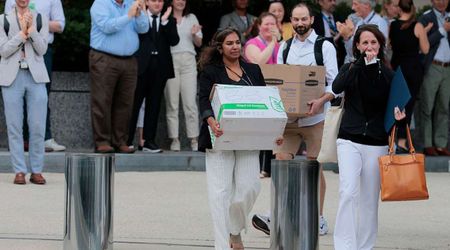Amidst Rising Rent, Tiny House in Las Vegas Attracts Interest From Individuals and Families

With higher living costs and a tilt towards minimalistic living in the past few years, tiny homes are seen as more sustainable spaces combining comfort and innovation. In the heart of the Las Vegas Valley, a 160 sq ft apartment has become the talk of the town, drawing in over 113 eager renters since hitting the market at $950 a month. Crafted by an anonymous owner for a modest $22,000, the house offers affordability in a housing market that has been witnessing skyrocketing prices lately.

Las Vegas' latest attraction
The fully furnished house features a charming standalone dinette set, a two-burner stove, a fridge, a washer, and a dryer, providing the essentials for compact living. With a shower, a second-floor bedroom, and a snug private backyard, this micro home packs a punch in functionality and comfort.
The decision to set the rent at $950 a month, was driven by the owner's desire to offer an affordable housing option. Impressively, this fee covers all utilities, including water, electricity, plumbing, trash, and Wi-Fi.
Despite its tiny dimensions, the apartment has attracted the interest of families, with three groups, each comprising two adults, two children, and even a pet, expressing enthusiasm. The soaring demand reflects the current challenges in the housing market, especially in a city where the average rent stands at a steep $1,745, requiring an annual income of $70,000 for affordability.
Inflation came in hotter than expected in January, and it may take a few more months to know if that was a fluke or if price increases are getting stickier. But one key part of the inflation picture may already look far worse than things really are.https://t.co/69lNlkbpih
— The Washington Post (@washingtonpost) March 4, 2024
Las Vegas, mirroring a national trend, has witnessed a 29.4% surge in rental costs since 2020, pushing individuals towards unconventional living spaces. Acknowledging this shift, Nevada implemented legislation in 2021, mandating cities with populations exceeding 150,000 to establish zoning laws for tiny homes by 2024.

Softening rental markets
After a tense 2021 and 2022, rental markets exhibit signs of cooling. Apartment rent growth, soaring at a record-breaking 15 percent annually in Q1 2022, decelerated to a mere 0.4% YoY by Q3 2023. Rising vacancy rates, primarily due to robust multifamily completions, played an essential role in this slowdown.
Affordability crisis peaks
Despite market cooling, asking rents remain above pre-pandemic levels, marking the worst affordability conditions on record. In 2022, cost-burdened renter households hit a new high at 22.4 million, emphasizing a 3.5 percentage point surge in just three years.
Tiny home is inundated with requests from interested renters who are desperate for affordability https://t.co/rO8bbAMEpQ pic.twitter.com/mYZ1h0X3Rv
— New York Post (@nypost) March 4, 2024
An upward shift in the rent distribution, particularly the loss of low-cost rental units, contributes to this affordability crisis. Furthermore, rent has outpaced income levels over the past two decades, leaving households with incomes under $30,000 with minimal funds after rent and utilities.
Escalating instability
Early pandemic measures to secure renters' homes wane as rents surge, leaving many households vulnerable. Evictions approached pre-pandemic levels by the end of 2022, and homelessness witnessed a significant rise, with an unprecedented 71,000 increase from January 2022 to January 2023, reaching an all-time high of 653,100 people.
Rental assistance shortfall
Despite worsening affordability, rental assistance fails to match the growing need. Very low-income renter households grew by 4.4 million from 2001 to 2021 but assisted households increased by only 910,000. This leaves 14 million income-eligible households grappling with unaffordability.
View this post on Instagram
Aging rental stock demands investments
The median age of the rental stock, at 44 years, highlights the urgent need for substantial investments. Nearly 4 million renter households inhabit substandard conditions, and the repair cost estimate stands at $51.5 billion.
Moreover, upgrades for climate change resilience are imperative, with more than 18 million rental units under threat from environmental hazards.























